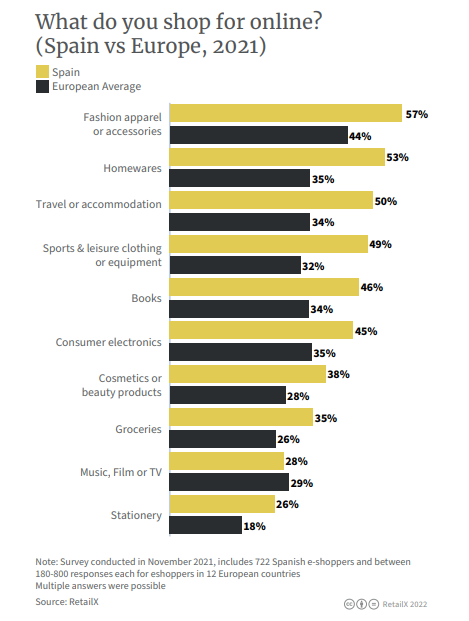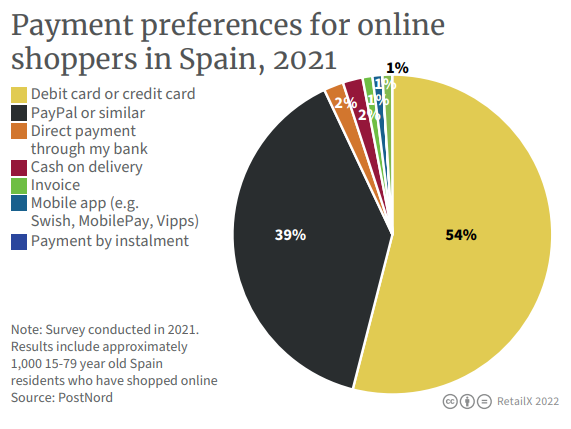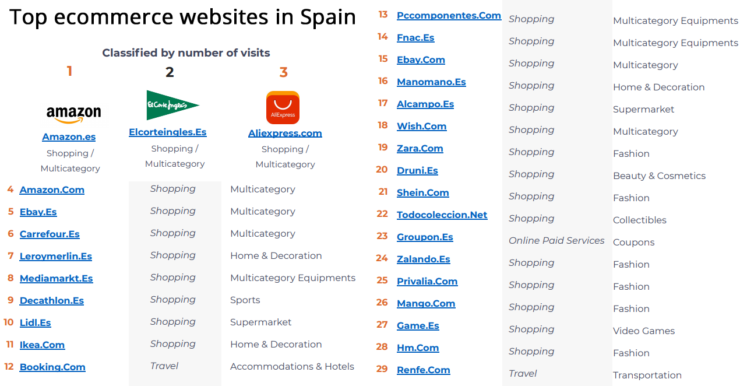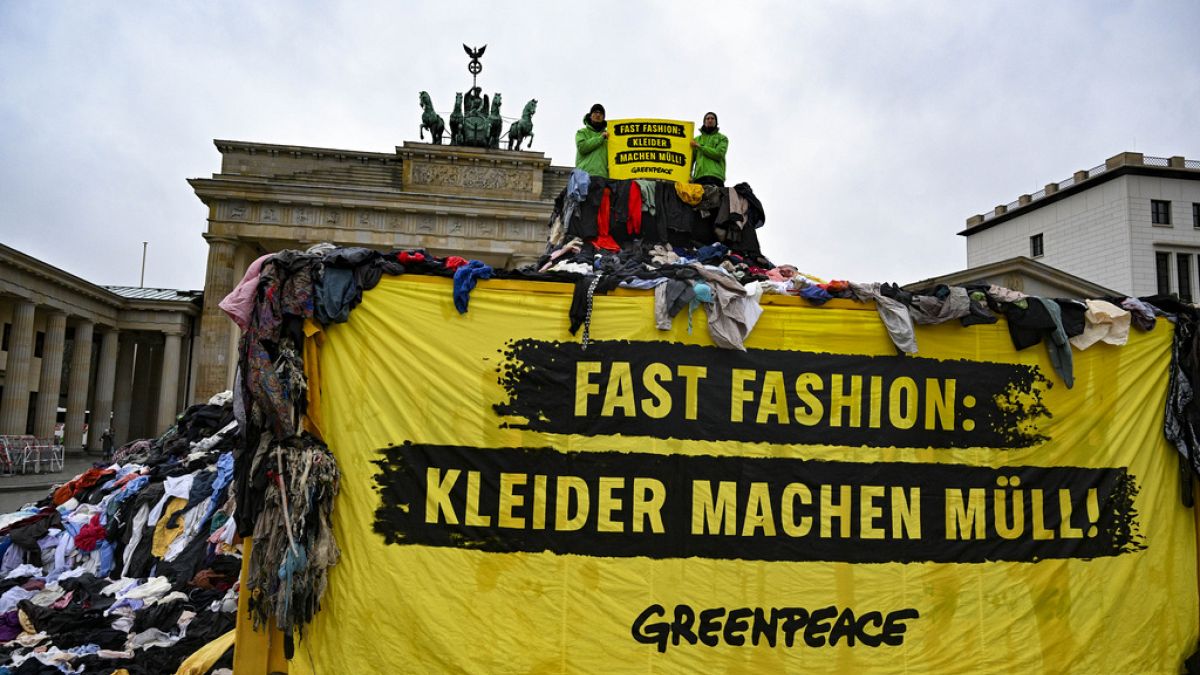Ecommerce in Spain – Ecommerce News

Spain is a country in South western Europe. With several strong ecommerce players, it is an interesting market to keep an eye on. Additionally, Spanish consumers are increasingly shopping online. Here is what you need to know about ecommerce in Spain.
|
COUNTRY STATISTICS |
SPAIN |
|---|---|
| Population | 47.4 million people |
| Internet users (% of population) | 93% |
| Online sales | 84 billion euros (2023) |
| Online stores worth mentioning: | Zara, El Corte Inglés, Mango |
Content:
Ecommerce events in Spain
Every year there are several ecommerce events being organized in Spain. We have a handy ecommerce events calendar, where you can find all the major online retail events in Europe.
Ecommerce customers in Spain
According to RetailX, 93 percent of the Spanish population uses internet. And in 2022, 68 percent of them shop online. By the end of 2021, that share was just 63 percent. This indicates that an increasing amount of Spanish consumers is turning to online shopping.
What consumers in Spain shop for online has increased across the board. This can be seen in the percentage of people saying they shopped online in 2021 more for groceries, consumer electronics, clothes and gifts than they did before the pandemic.

A similar percentage has started buying clothes online, or likewise increased the frequency with which they do so. It is the grocery retailers that have seen the greatest influx of new customers. At least 11.8 percent of people who shop online in Spain said they did not buy groceries online before the pandemic but do so in 2022.
Buying groceries online remains something that is done by only around a third of online shoppers, but more Spanish consumers do so than the average across Europe. Fashion is the most purchased category online in Spain, with homewares being a close second. Fashion is also the most likely to be bought online by women while the items men are more likely to buy online are consumer electronics. At least 43 percent of men buy from this category online.

When looking at payment preferences, in 2021, the debit and credit card were still the most popular payment methods in Spain. E-wallets are increasingly becoming popular, with PayPal as the most popular option. It accounts for 87 percent of such transactions. The use of e-wallets is expected to rise significantly in coming years as the number of people choosing to pay by card declines from 54 percent in 2021 to 48 percent by 2025.
Looking for ecommerce software to start selling in Europe? Webador and Shopify are platforms that are well optimized for cross-border ecommerce.
The ecommerce market in Spain
In 2021, the Spanish ecommerce market was worth 57.7 billion euros. Additionally, the online share of the total retail market has risen in recent years. In 2014, online held a market share of just 3 percent. This only grew to 5 percent in 2018. Online really took off in 2019 as it rose to take an 8 percent share of total retail spend. By 20021, it accounted for 11 percent of total consumer retail spend.
Do you want to sell cross-border in Europe? It ain’t easy but with the right ecommerce software, online marketing channels and European fulfillment companies market leadership is surely possible.
Big online stores in Spain
Popular online stores in Spain are El Corte Inglés, eBay, Amazon, Mil Anunacios, Segunda Mano, Lets Bonus, Groupon, Bing, eBay and Groupalia.

Read all our articles about ecommerce in Spain.
Related
Scotland’s biggest landowner is fashion brand billionaire
A European fashion tycoon is the biggest landowner in Scotland—and perhaps even the UK. Danish billionaire Anders Holch Polvsen named the Highlands' richest
EU targets food and fast fashion in new war on…
Polish presidency of the EU Council announced breakthrough in early hours after marathon overnight talks on food waste reduction targets and measures t
Fashion must-haves for your spring semester in Europe
Preparing to study abroad can be incredibly intimidating. With all the emotional turmoil you’ll face in the weeks prior, the last thing you�
Worldview: Ukraine’s Adaptive Fashion for the War Wounded
🇺🇦 Ukrainian Fashion Week presents adaptive clothing for combat injuries. More than 40 fashion brands presented their latest collections at Ukrainian Fash











